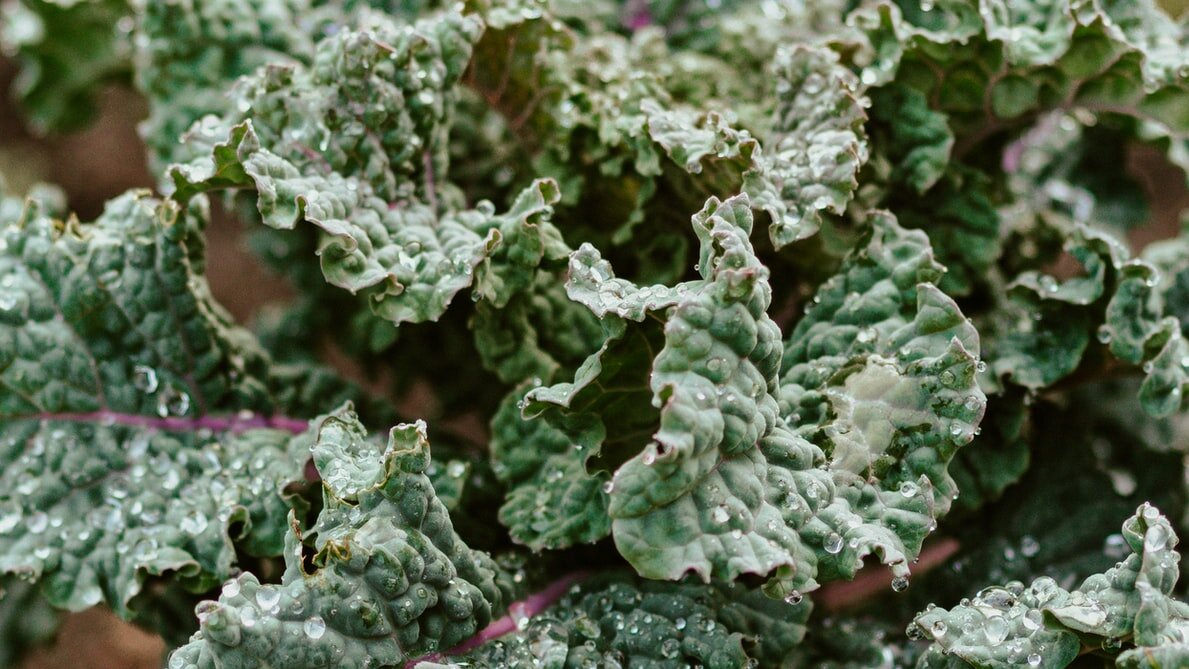Energetics of Kale: Love it or Hate it??
Somehow kale has acquired a bad reputation for being gross, too tough to eat, and only eaten by health food “freaks”. The amount of Kale Hater groups around the internet is astonishing. This primitive cruciferous cousin of cabbage has actually been grown and consumed around the world for centuries. The first mention of kale in literature was during 600 BCE in Greece, whereas the first real mention of cabbage in literature was in 16th century Paris. Even one of America’s founding fathers, Thomas Jefferson, grew many varieties of kale in this garden at his Monticello estate. In the last decade, kale has seen a huge comeback in popularity around the US and the globe.
While kale can be tricky to cook - when done right it is delicious and nutritious.
Varieties
Kale comes in several varieties (red, green, curled, savoy, and fringed) and every variety has its own taste, texture, and appearance. The most common type of kale (found in most grocery stores) is curly kale. Curly kale has a long stem with frilly edges, comes in a multitude of colors, and is slightly bitter to taste. When grown during the cold months it has a sweeter taste and tends to be more tender. A dark blue-green variety called Lacinato, also known as Tuscan or dinosaur kale, has a sweeter flavor with a hint of pepperiness and has glossy leaves. Another popular variety is Ornamental kale, a decorative garden plant that is also called salad savoy. This type of kale has leaves ranging from white, green, and even purple and is a mellower version of curly kale. There’s one that turns red and purple in the cold, called Redabor, and miniature Scottish varieties for tiny gardens.
In general, kale is grown throughout the year, although its flavor is at its best during the winter months. When purchasing kale in the summer, it can be less tender and will need an extra 30 seconds or so of cooking time to get tender.
How to Choose and Store
When purchasing kale, look for bunches with firm, bright, deeply colored leaves with moist and hardy stems. Avoid kale that has holes in the leaves, is wilted looking, or is yellowing.
Kale has to be stored properly to avoid turning yellow and bitter. The best place to store kale is in the fridge after placing the kale in a sealable plastic bag. Remember never to wash kale before storing and to squeeze out as much air as possible from the bag to prevent spoiling. If stored properly, kale can only be kept fresh for up to 5 days — so make sure to eat it sooner than later!
Caution on storing kale in the freezer as it loses its freshness when thawed.
Cooking Tips!
Cutting Kale into thin slices helps to break down cell walls and helps to boost the activation of an enzyme called myrosinase. This enzyme helps to convert the plant’s nutrients into their active form, so make sure to let the kale sit for 5-10 minutes prior to ingestion or cooking to get the biggest nutrient impact! You can also help the myrosinase increase its benefits by sprinkling on a little lemon juice to the kale while it sits!! (This applies to many cruciferous vegetables such as broccoli and brussel sprouts.)
The best way to cook kale AND keep all its nutrients is to steam it for 5 minutes.
Caution on overcooking kale, as it can and will make the kale lose its edible texture and decrease its nutrition content by up to 50%!
Kale should never be:
Sauteed: It dries out kale and it will scorch before becoming tender!
Boiling: It becomes soggy and loses its flavor and nutrients in the water.
Cooked in Oil: The high heat can damage the natural oils in kale and can create harmful free radicals.
Nutrition
In the line-up of dark green and leafy, this one is a stand-out.
Kale lowers the risk of bladder, breast, colon, ovary, and prostate cancer due to its high content of organosulfur phytonutrients like glucosinolates and methyl cysteine compounds. While the “how” these compounds help to prevent cancer is still not super clear, research has shown that these compounds act upon the liver and its ability to neutralize carcinogenic substances. Did you know kale’s glucosinolates may help detox all the way to the genetic level? Sulforaphane, a potent glucosinolate, boosts the liver’s detoxification ability by potentially altering gene expression, allowing the liver to clear carcinogenic substances quicker and more efficiently.
Kale is high in carotenoids, especially lutein and zeaxanthin, which help to filter UV light to prevent damage to the eyes, as well as help to reduce the risk of cataracts. It is also high in Vitamin C, which helps the body as both an antioxidant and immune system support. Kale is also a rich source of vitamin K (nearly two times the amount of any other cruciferous veggie), manganese, calcium, folic acid, iron, vitamin B6, vitamin E, and niacin. A mere 200 calories worth of kale contains 15 grams of fiber, plus the pre-cursor to omega-3 fatty acids — Alpha-Linolenic Acid or ALA.
At only 36 calories per cup, this waistline-friendly leafy green is a nutritional powerhouse!
Energetics
Kale is warm in temperature and has a sweet and slightly bitter-pungent flavor. Its bitter-pungent flavor helps to ease lung congestion by drying out and draining dampness (mucus). The sweet flavor of kale nourishes the Stomach and helps to strengthen the body. The combination of sweet and bitter helps to treat stomach and duodenal ulcers (used traditionally as a juice), as the bitter flavor has a cooling effect to decrease inflammation and clear infection, while the sweet flavor helps to build tissue and healthy fluids.
Cauliflower Rice Kimchi Kale Bowl
Serves 4
Ingredients
coconut sauce:
⅓ cup coconut milk
2 tablespoons white miso paste
1 tablespoon rice vinegar or fresh lime juice
1 teaspoon minced ginger
Pinch of sea salt
Bowls:
1 small head of cauliflower, riced
½ cup chopped scallions
½ garlic clove, minced
7 ounces shiitake mushrooms, stemmed and sliced
½ teaspoon rice vinegar
½ teaspoon tamari
6 leaves curly kale, stemmed and torn
14 ounces baked tofu
1 avocado, diced
½ cup kimchi
¼ cup microgreens, optional
Sprinkle of sesame seeds, optional
Extra-virgin olive oil, for drizzling
Sea salt
Lime slices, for serving
Preparation
Make the coconut sauce: In a small bowl, whisk together the coconut milk, miso paste, lime juice or rice vinegar, ginger, and salt. Set aside.
In a large nonstick skillet, heat a drizzle of olive oil over low heat. Add the riced cauliflower, the scallions, garlic, and a few pinches of salt, and cook, stirring occasionally, for 3 minutes just to take the raw flavor off the cauliflower. Remove from the heat and stir in ½ of the coconut sauce. Portion the cauliflower rice into 4 bowls.
Wipe any remaining cauliflower bits out of the skillet. Heat the pan back to medium with a few splashes of olive oil. Add the mushrooms and a few pinches of salt and cook, stirring occasionally, until tender, about 5 minutes. Remove from the heat and stir in the rice vinegar and tamari. Add the mushrooms to the cauliflower bowls.
Wipe out the skillet again, add a tiny bit of water and the kale and cook over medium heat, covered, for 1 minute or until lightly wilted.
Finish assembling the bowls by drizzling more of the coconut sauce over each portion of cauliflower. Add the kale, tofu, avocado, and kimchi to the bowls along with the microgreens and sesame seeds, if using. Serve with any remaining sauce and the lime slices on the side.
Source
https://www.loveandlemons.com/cauliflower-rice-kimchi-bowls/
Mateljan, George. The World’s Healthiest Foods: Essential Guide for the Healthiest Way of Eating. George Mateljan Foundation: Seattle, 2007. Print.
Pitchford, Paul. Healing with Whole Foods: Oriental Traditions and Modern Nutrition. North Atlantic Books: Berkeley, 1993. Print.




